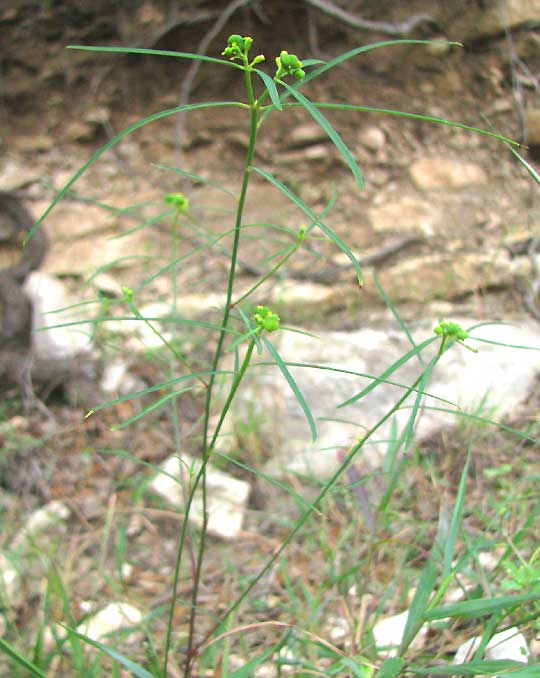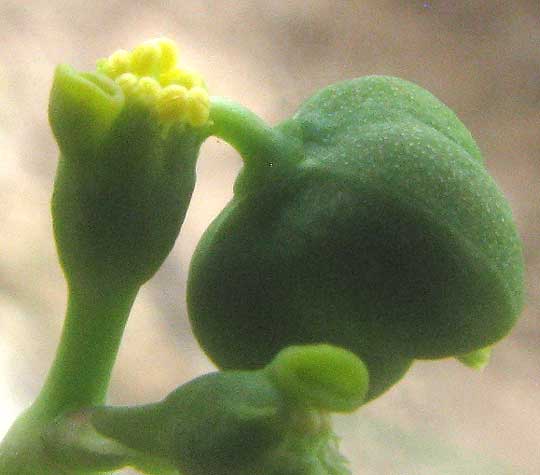Excerpts from Jim Conrad's
Naturalist Newsletter
from the September 22, 2013 Newsletter issued from the Frio Canyon Nature Education Center in the valley of the Dry Frio River in northern Uvalde County, southwestern Texas, on the southern border of the Edwards Plateau; elevation ~1750m (~5750 ft); N29.62°, W99.86°; USA
WILD POINSETIA
Last week we looked at the Toothed Spurge with its broad, sawtooth-margined leaves, shown at http://www.backyardnature.net/n/h/euphorb2.htm.
This week I ran across another spurge species whose flowers were very similar but its leaves were extremely slender, as shown below:

If you know your spurges and can't believe that that's a spurge, you'll become a believer when you see the flowers below:

Such a strange spurge should have been easy to ID, but in the end I was obliged to look at all spurge species -- all members of the genus Euphorbia -- found in this part of the world. However, after viewing many pictures I found nothing similar to it. Lately on the Internet I've met someone in San Antonio knowledgeable of south-Texas wildflowers, so I sent our pictures to him. They threw him for a loop, too, so he forwarded the pictures to Bill Carr, a well-known, book-writing expert on Texas wildflowers, who quickly pegged our plant as the "highly polymorphic EUPHORBIA CYATHOPHORA... at its skinniest and greenest." Commonly Euphorbia cyathophora is called Wild Poinsettia because normal plants genuinely look like red-topped but scrawny Poinsettias. Well, "polymorphic" means "many-shaped," and our plant is the Wild Poinsettia at its most extreme.
Actually, we've already met this species, down in the Yucatan. You can see what it normally looks like on our page at http://www.backyardnature.net/yucatan/poinsett.htm.
Wild Poinsettia, also called Fire-on-the-Mountain, Mexican Fire Plant, Summer Poinsettia and Painted Spurge, occurs in the warmer half of the US south through eastern Mexico, and it's introduced into many countries. As with many Euphorbias, the plant's milky sap can be poisonous if ingested, and irritates eyes, mouth, and mucous membranes.